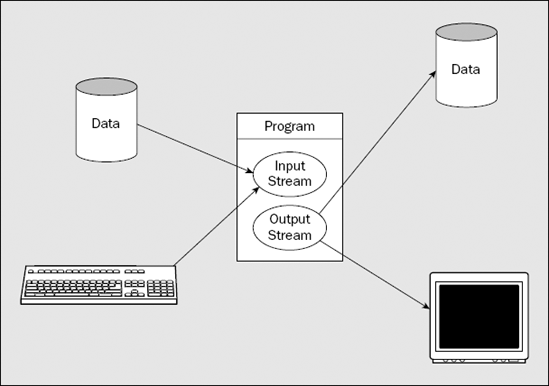8.2. Understanding Streams
A stream is an abstract representation of an input or output device that is a source of, or destination for, data. You can write data to a stream and read data from a stream. You can visualize a stream as a sequence of bytes that flows into or out of your program. Figure 8-1 illustrates how physical devices map to streams.
Figure 8.1. Figure 8-1

8.2.1. Input and Output Streams
When you write data to a stream, the stream is called an output stream. The output stream can go to any device to which a sequence of bytes can be transferred, such as a file on a hard disk, or a phone line connecting your system to a remote system. An output stream can also go to your display screen, but only at the expense of limiting it to a fraction of its true capability. Stream output to your display is output to the command line. When you write to your display screen using a stream, it can display characters only, not graphical output. Graphical output requires more specialized support that I'll discuss from Chapter 17 onwards.
Note that while a printer can be considered notionally as a stream, printing in Java does not work this way. A printer in Java is treated as a graphical device, so sending output to the printer is very similar to displaying graphical output on your display screen. You'll learn how printing works in Java in Chapter 21.
You read data from an input ...
Get Ivor Horton's Beginning Java™ 2, JDK™ 5th Edition now with the O’Reilly learning platform.
O’Reilly members experience books, live events, courses curated by job role, and more from O’Reilly and nearly 200 top publishers.

